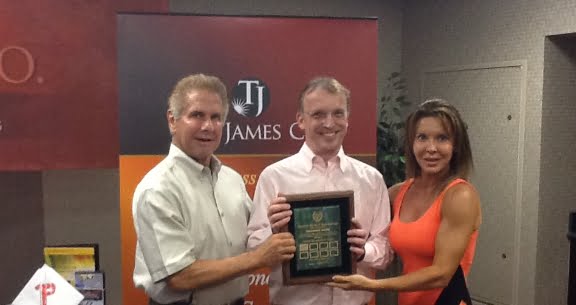By Adriana James and Andreas Dorn – Guest writer
This is the third article in the series dedicated to our very successful and knowledgeable Master Hypnosis Trainers who graduated this year. In Part One of this articles I addressed common misconceptions and fears about Hypnosis and in Part Two follows suit explaining why some people are still confused – Hollywood did not do us any favors when it portrayed hypnosis as this powerful “power over” tool.
Today I heard a prominent talk-show bashing neuro-linguistic programming and hypnosis because the politicians, the advertisers, the television programmers and the business tycoons use it. He was complaining that all these people (especially the advertising companies of the world) take advantage of our lack of knowledge and education in NLP and Hypnosis to manipulate our perceptions, but in the process he implied that NLP and Hypnosis themselves are to be blamed.
On one hand he is right – these people are using all these technologies and this is not a new fact.
But on the other hand, to blame the techniques themselves is to miss the point. These are just a bunch of techniques. You can blame the selling techniques as much as you want, it is not the techniques that got you buying what you don’t want. Is the integrity or lack thereof of the sales person who used these techniques! Can you manipulate somebody with them? Sure. But you can manipulate somebody without them. Do you know any manipulative people? I do! And some of them are really good at it. However they do not have any knowledge of NLP or Hypnosis.
The character of the people and their integrity does not make the technologies evil. The question should be about the intent of the people using them. A hammer can be used for good or for bad. The same is true of any given set of techniques. Let’s learn them for our benefit, and be “in the know” ourselves.
I hope I made my point and managed to shed some light on this topic especially for those of you still on the fence about how positive learning hypnosis for yourself can be!
Below, you have Andreas Dorn’s write-up about Hippolyte Bernheim, because Andreas has used this method of inducing trance when he performed his demonstration at the end of Master Hypnosis Trainer’s Training in Henderson, Nevada.
I would like to bring to your attention his precision and meticulous and yet kind and gentle induction of trance which is obvious in the video. Andreas is a really magnificent trainer of Hypnosis.
This concludes our mini-series on Hypnosis Master Trainer Articles and Videos.
Be well and enjoy the video. It is an exceptional demonstration!
Hippolyte Bernheim (1840-1919) Is An Interesting Character In The History Of Hypnosis.
By Andreas Dorn
Born in Mulhausen, Alsace, he graduated as a doctor of medicine in 1867 and started lecturing at his university, the University of Strasbourg, upon graduation.
France lost Strasbourg as a result of the war against Germany in 1871, which caused Bernheim to move to Nancy. In Nancy, he became a clinical professor.
In Nancy, Bernheim taught medical science for a longer period of time and focused very much on prevalent diseases, such as rheumatic fever, typhus and others.
Along the line, he heard of a person called Ambroise Liebeault (1823-1904), who was said to treat people by inducing “sleep.” After Liebeault
had cured a man of sciatica – Bernheim’s own hospital hadn’t managed to do that – Bernheim decided to visit Liebault’s clinic.
He observed Liebeault carefully and then became convinced of the medical usefulness of hypnosis
He became interested in the study of hypnosis and became increasingly excited about the methodology especially after the medical community also took up hypnosis as a new field in 1880. In fact, Bernheim actually became a significant innovator in the field.
Before Bernheim actually entered the stage in the history of hypnosis with his research findings it was said that only hysterical people and women could go into trance. This didn’t even change after the emergence of Braid, who coined the word Hypnosis in the first place.
But while even Braid and those that followed him defined hypnosis as a state of sleep, Bernheim actually rejected this notion and said that “there is hypnosis without sleep and all the phenomena of hypnosis can exist without sleep.” Isn’t that interesting and doesn’t this remind you of your own training in hypnosis (if you haven’t done any, when are you going to do it – just asking!)?
Bernheim also writes that “if one wishes to keep the words “hypnosis” and “hypnotic state”, it would need to be defined as follows: Hypnosis is “a particular psychic state, capable of being induced, which activates or heightens various suggestibilities, that is, the capacity to be influenced by an idea accepted by the brain, and to realise it. In reality, hypnotic phenomena are only phenomena of suggestibility.”
Liebeault and Bernheim became so utterly convinced of the power of hypnotic suggestions that members of the Nancy School started to forego the hypnotic induction entirely for direct suggestion in the waking state. This technique was termed “psychotherapeutics.”
Bernheim’s opinion was in direct conflict with Charcot and the Salpetriere School, where Charcot practiced his way of “doing hypnosis”. Charcot argued that in order to achieve the hypnotic state, one needs to provoke hysteria in the subjects – thus supported the prevailing view that existed at that time about hypnosis.
Bernheim however strictly opposed this notion, and brought another interesting concept onto the stage of hypnosis. He strongly underlined the importance of suggestions in the work with subjects and stated that Charcot’s occurrence of hysteria in the patients was simply a result of suggestions provided to the patients.
Moreover, Bernheim said that hypnosis can be used therapeutically and, hence, hypnosis is useful in the treatment of hysteria – what a conflict to Charcot!!
In Nancy and following their acquaintance, Bernheim and Liebeault started to worked together. Both founded the Nancy School, which was also called the Suggestion School at a later stage. Together, they treated over 12,000 patients.
Liebeault intensively worked with patients inducing artificial somnambulism. In this sense he further influenced Bernheim to readjust his views of hypnosis again. In the end, Bernheim defined hypnosis as a heightened state of artificially induced suggestibility.
Liebeault in his work also influenced Emile Coue and Sigmund Freud, who also intensively observed Bernheim’s work and later translated Bernheim’s On Suggestion and its Applications to Therapy in 1888 into German.













































